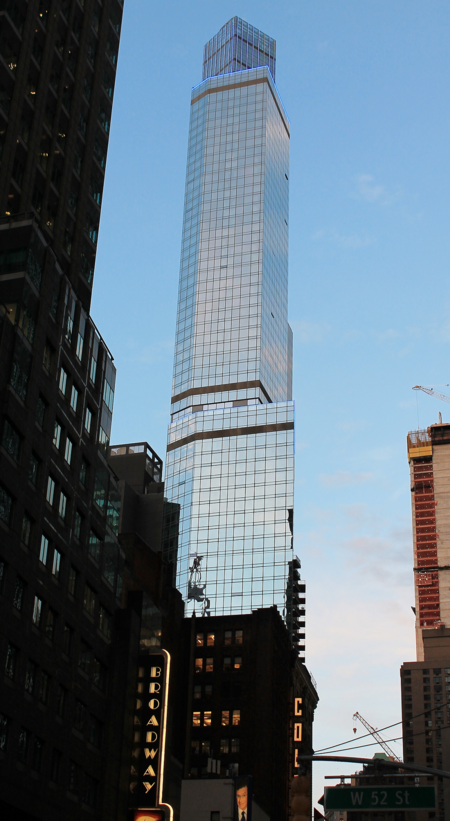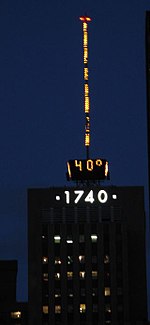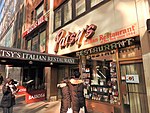1717 Broadway
2013 establishments in New York CityBroadway (Manhattan)Hotel buildings completed in 2013Manhattan building and structure stubsMidtown Manhattan ... and 2 more
Skyscraper hotels in ManhattanUse mdy dates from August 2019

1717 Broadway is a skyscraper in the Midtown Manhattan neighborhood of New York City. At 750 feet (230 m) high, it is the tallest hotel in North America. The building contains two hotels, the Courtyard New York Manhattan/Central Park below the 35th floor and the Residence Inn New York Manhattan/Central Park on floors 35 and higher, with a total of 639 rooms. The glass-clad building is on the northwest corner of 54th Street and Broadway.
Excerpt from the Wikipedia article 1717 Broadway (License: CC BY-SA 3.0, Authors, Images).1717 Broadway
West 54th Street, New York Manhattan
Geographical coordinates (GPS) Address External links Nearby Places Show on map
Geographical coordinates (GPS)
| Latitude | Longitude |
|---|---|
| N 40.7644 ° | E -73.9826 ° |
Address
1717 Broadway
West 54th Street
10019 New York, Manhattan
New York, United States
Open on Google Maps





